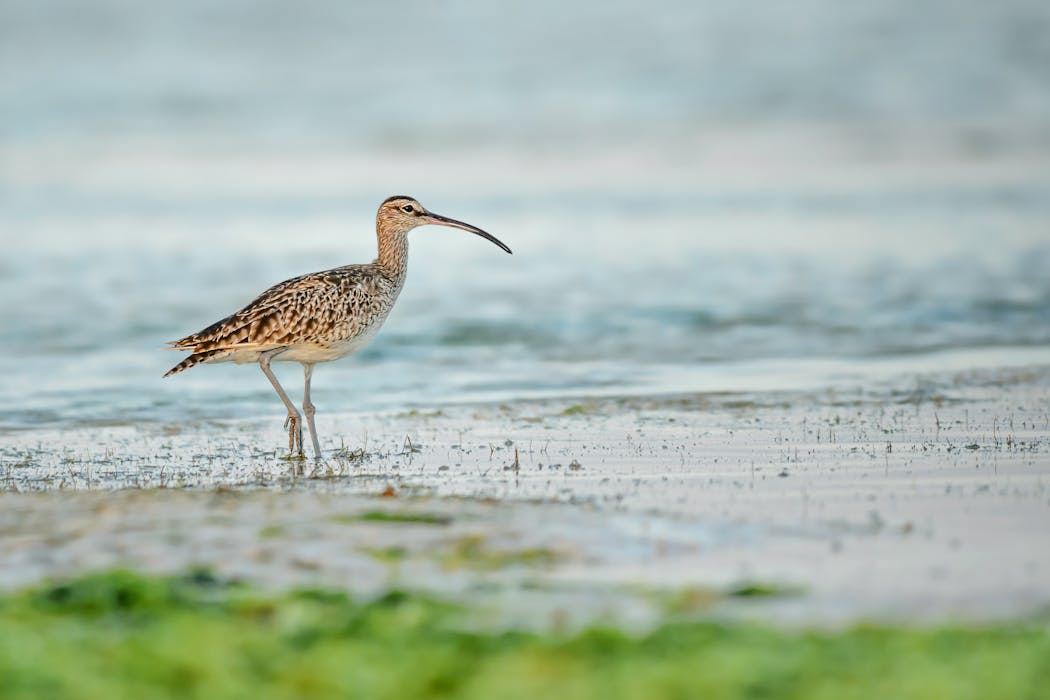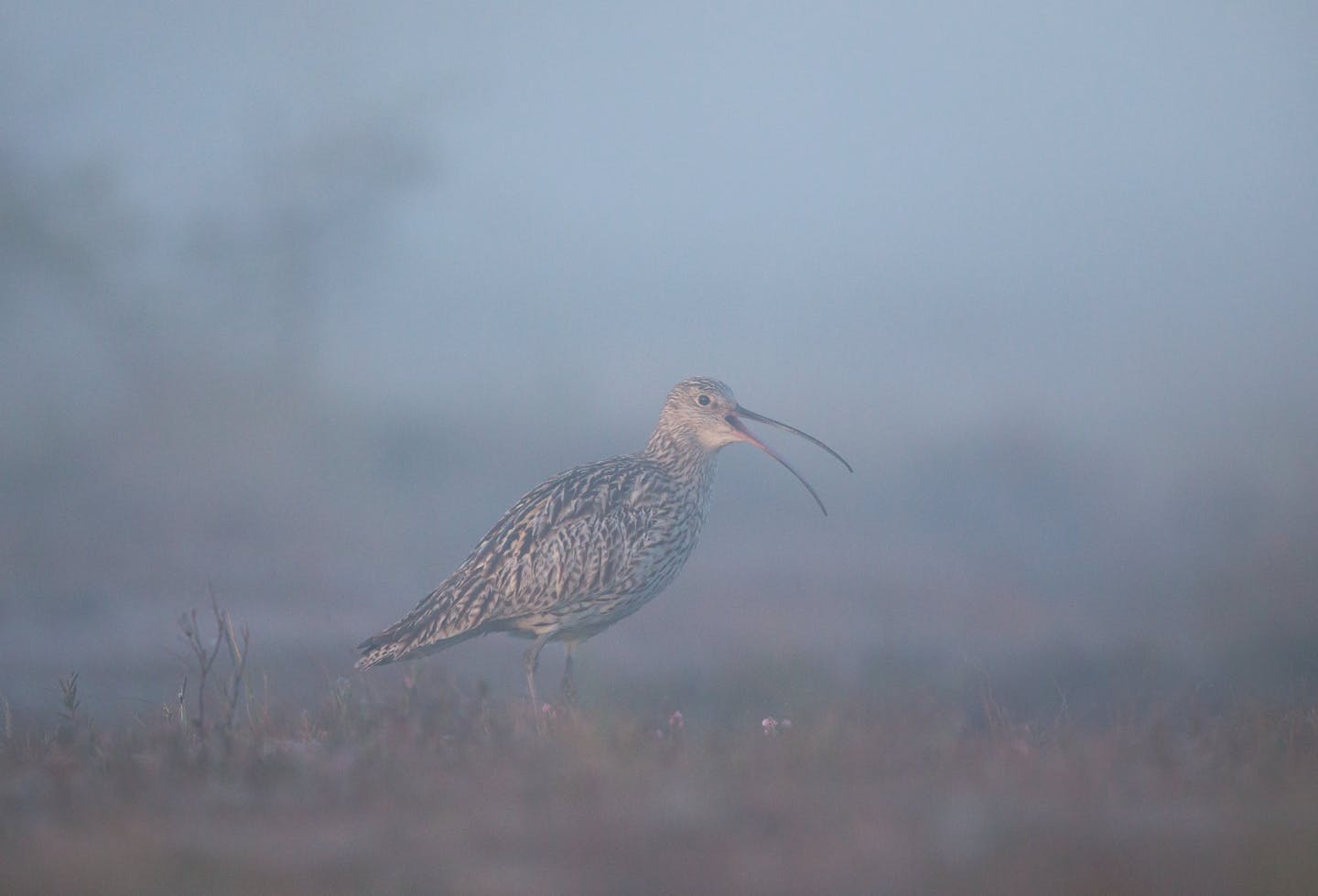
The slender-billed curlew (Numenius tenuirostris) has been officially declared extinct by the International Union for Conservation of Nature (IUCN).
This is the first-ever recorded global bird extinction from mainland Europe, North Africa, and West Asia. An accolade that no species wants. Yet, sadly, here we are. So how did we get here and what does this tragic extinction mean?
Numerous warning signs indicated the decline of the slender-billed curlew, with the first documented in 1912. Declines of the species continued over the subsequent decades but it was not until 1988 that it was classified in the high conservation concern category.
Extensive searches for any remaining slender-billed curlews were conducted but there have been no sightings since the mid-1990s. Extinction was declared as highly probable in 2024, and made official by the IUCN in October 2025.
The curlew was once thought to be fairly widespread. It was a migratory species that bred in central Asia and wintered in Europe, North Africa and the Middle East. As such, like many migratory species, the curlew relied on various habitats and safe passage routes.
The pressures leading to the extinction are largely unknown. However, due to its migratory nature, the extinction of this species is likely due to a combination of factors across its historic range.
Read more: Europe's wild bird species are on the brink – but there are ways to bring them back
Hunting of the species was carried out in many countries along its migratory route and is considered to be one of the major causes of initial declines. In conjunction, drainage of wetlands and overgrazing of grasslands led to the rapid loss of breeding sites for this ground-nesting bird. Conservation efforts were complicated by the fact that its distribution and ecology were largely unknown. So, death rates were high, birth rates were low, and very little could be done.
The last call?
Slender-billed curlews were striking birds. They stood proud with their long legs and slim, pointed, black bill. Their calls were sweet and whistling, but somewhat haunting. It is a sad fact that this bird will never be seen or heard again.
More widely, the loss of this species shines light on the global extinction crisis. Each species plays a vital role within its ecosystem. These curlews fed on small insects, crustaceans and molluscs by probing mud with their thin bills. The role these birds played as a predator in aquatic ecosystems (such as peat bogs) is now no longer filled. This gap will undoubtedly have consequences for other species.

Slender-billed curlews were indicators of the health of the boggy habitats in which they inhabited. Their decline to eventual extinction signifies that these habitats are under severe stress. Waterbirds like the curlew can also be valuable indicators of water contamination, lack of food availability and changes in nutrient levels.
Wading birds like the slender-billed curlew are declining globally and are considered to be the most pressing bird conservation priority in the UK. Populations of species such as lapwing (Vanellus vanellus), redshank (Tringa tetanus), snipe (Gallinago gallinago) and oystercatcher (Haematopus ostralegus) are declining in size and range across much of the UK due to habitat loss and reduced reproductive success.
The Eurasian curlew (Numenius arquata), a relative of the slender-bill, is of particular conservation concern and is thought to be the UK’s most rapidly declining species. Much effort is being made to save the Eurasian curlew so that it doesn’t follow the same fate as the slender-bill.
The UK Action Plan for Curlew (a coalition of farmers, scientists and charities) is calling for urgent and coordinated action that includes monitoring and research, habitat protection, predator management and guidance for land managers. While populations fell by 51% between 1995 and 2023 across the UK, there are signs that intensive conservation efforts are working, even if only locally.
The loss of the slender-billed curlew is truly saddening. But perhaps, just maybe, we can use this as a wake-up call to do more, and more quickly, for other wading birds that are on a similar trajectory.
Don’t have time to read about climate change as much as you’d like?
Get a weekly roundup in your inbox instead. Every Wednesday, The Conversation’s environment editor writes Imagine, a short email that goes a little deeper into just one climate issue. Join the 45,000+ readers who’ve subscribed so far.
This article is republished from The Conversation, a nonprofit, independent news organization bringing you facts and trustworthy analysis to help you make sense of our complex world. It was written by: Esther Kettel, Nottingham Trent University
Read more:
- Rewilding: rare birds return when livestock grazing has stopped
- Europe’s wild bird species are on the brink – but there are ways to bring them back
- How to design landscapes that enhance natural sounds and minimise noise pollution
Esther Kettel does not work for, consult, own shares in or receive funding from any company or organisation that would benefit from this article, and has disclosed no relevant affiliations beyond their academic appointment.


 The Conversation
The Conversation
 The List
The List PBS NewsHour
PBS NewsHour Ann Arbor News Life
Ann Arbor News Life Daily Kos
Daily Kos New York Post Video
New York Post Video